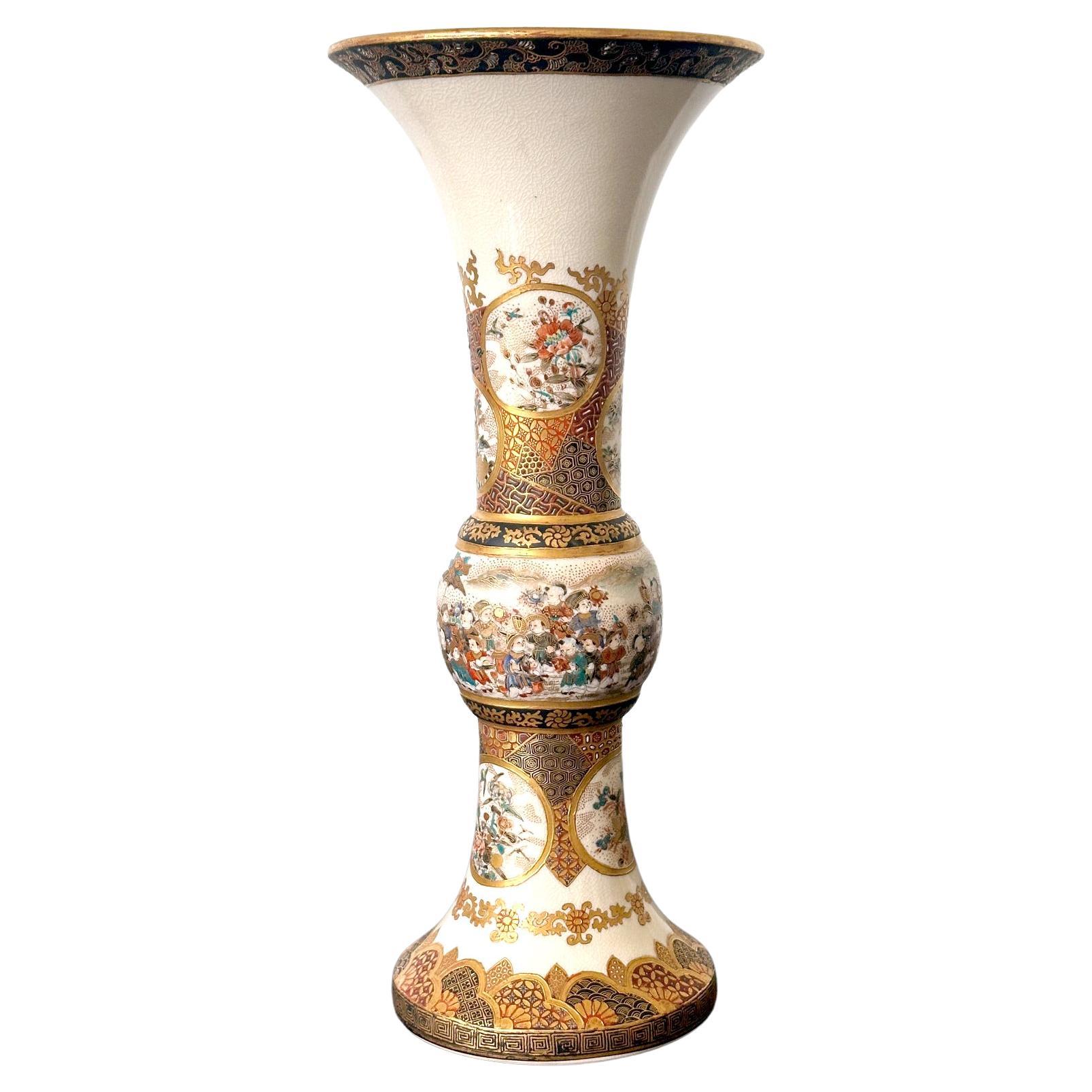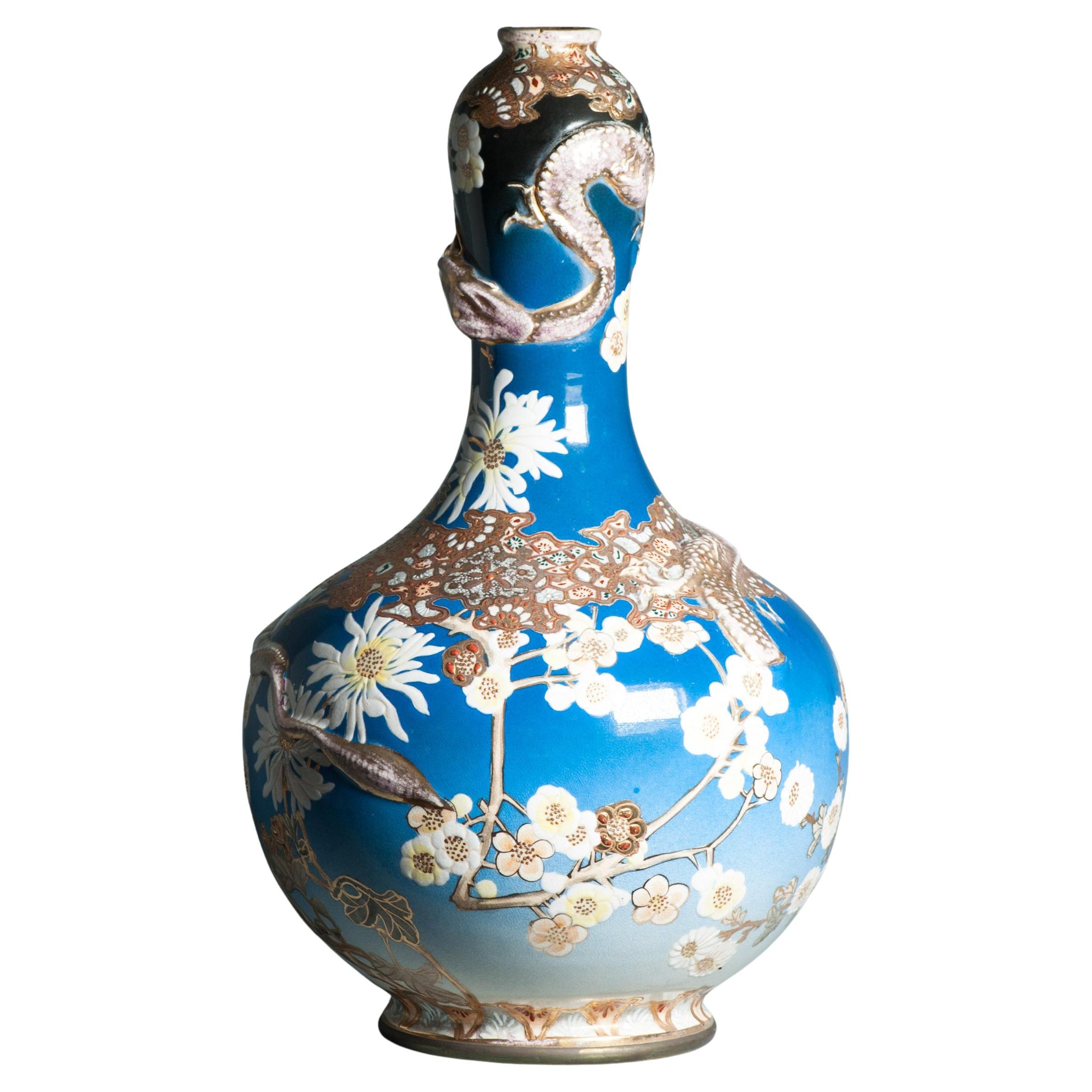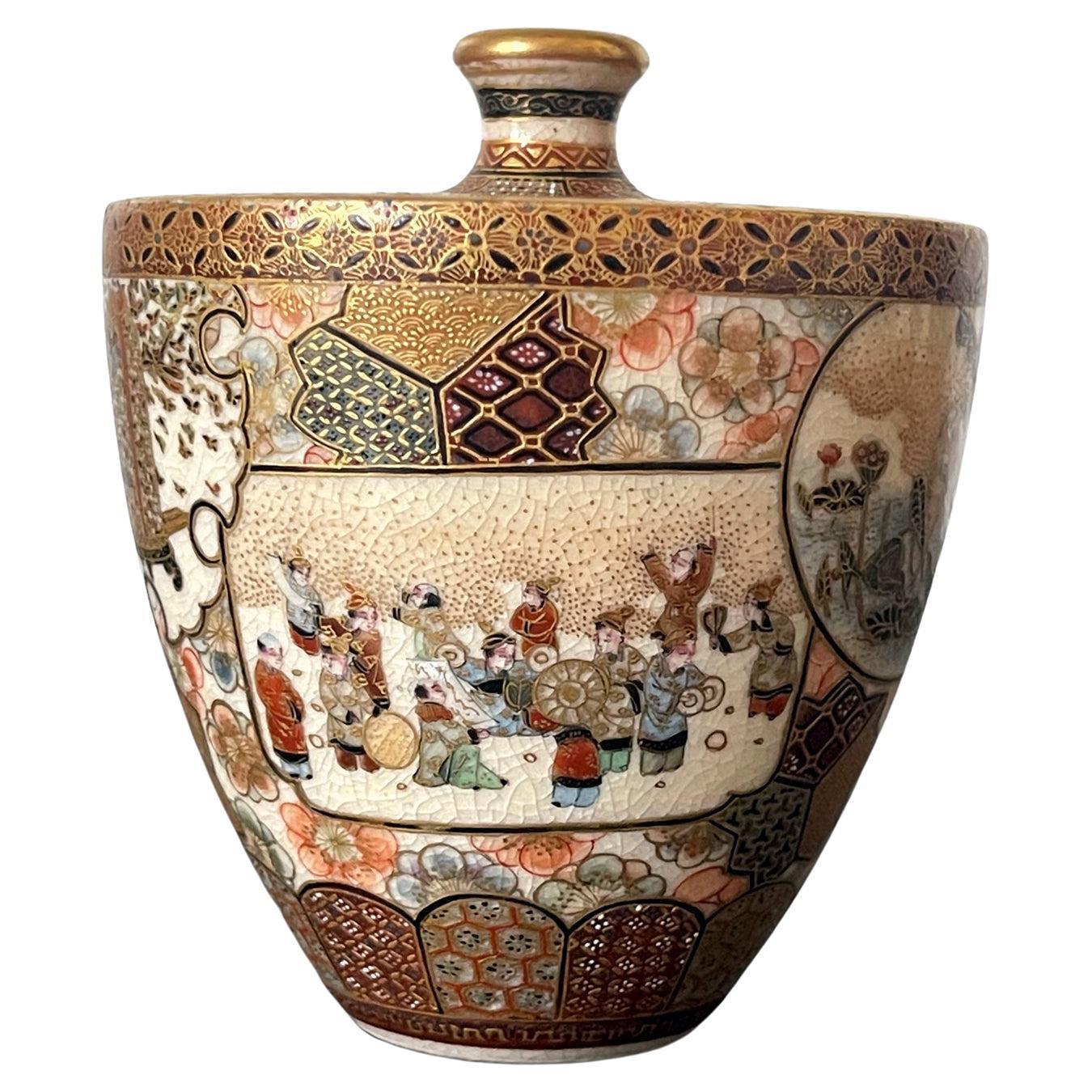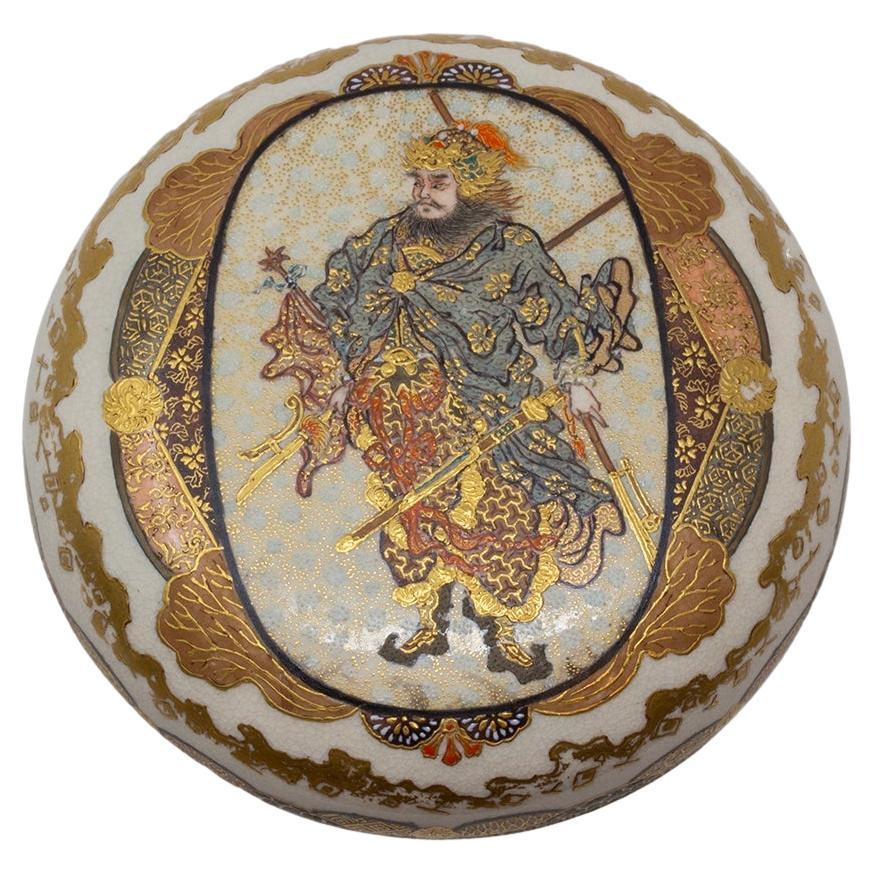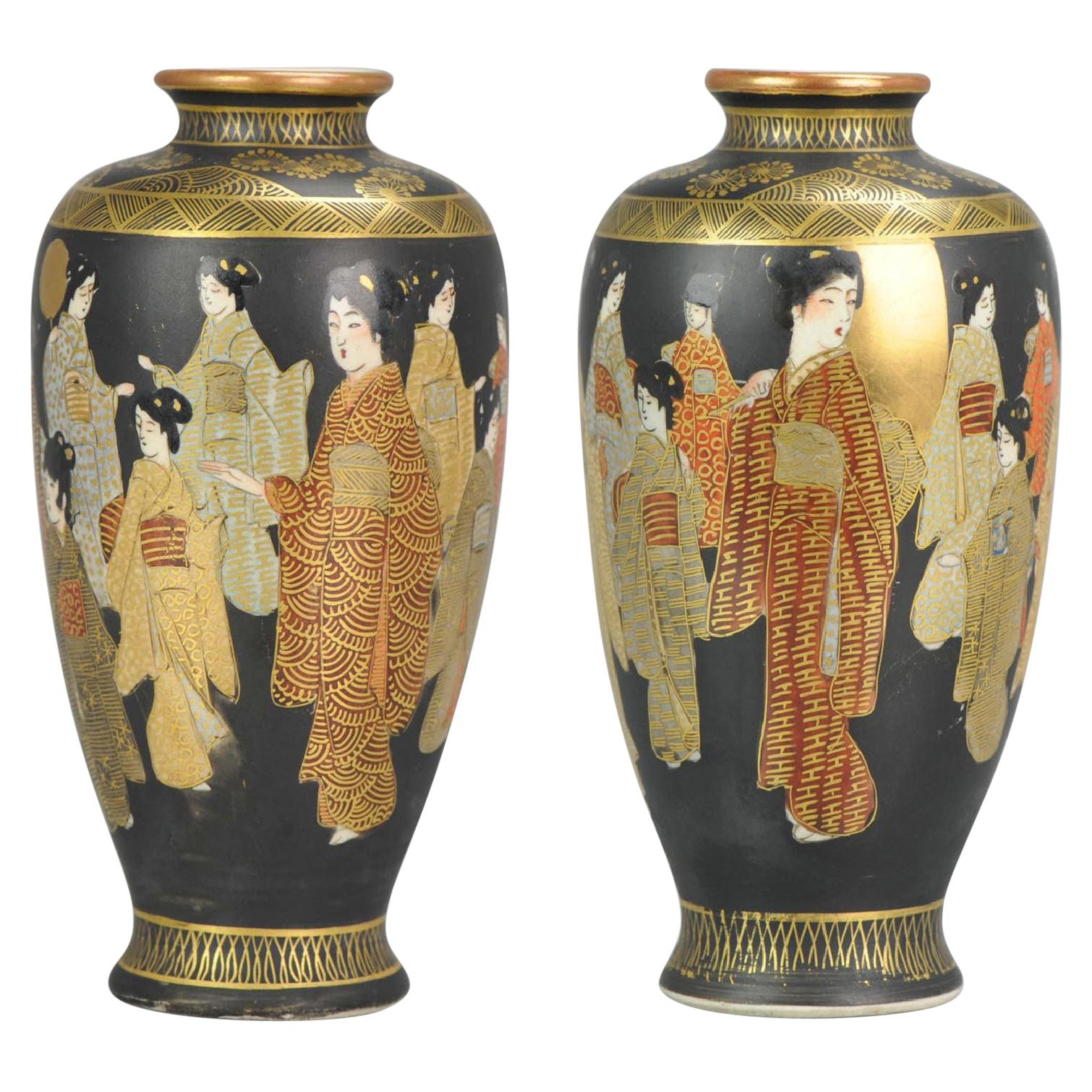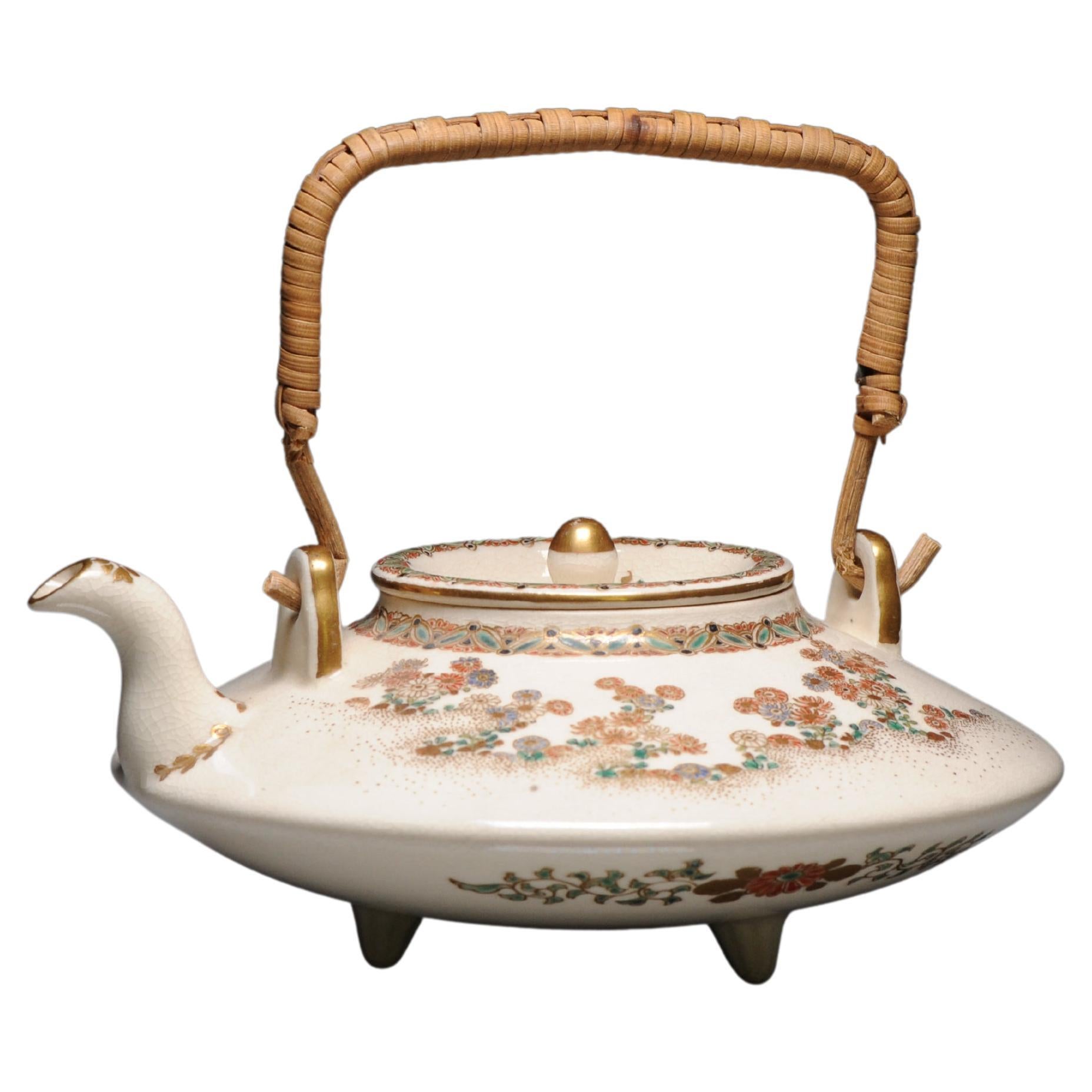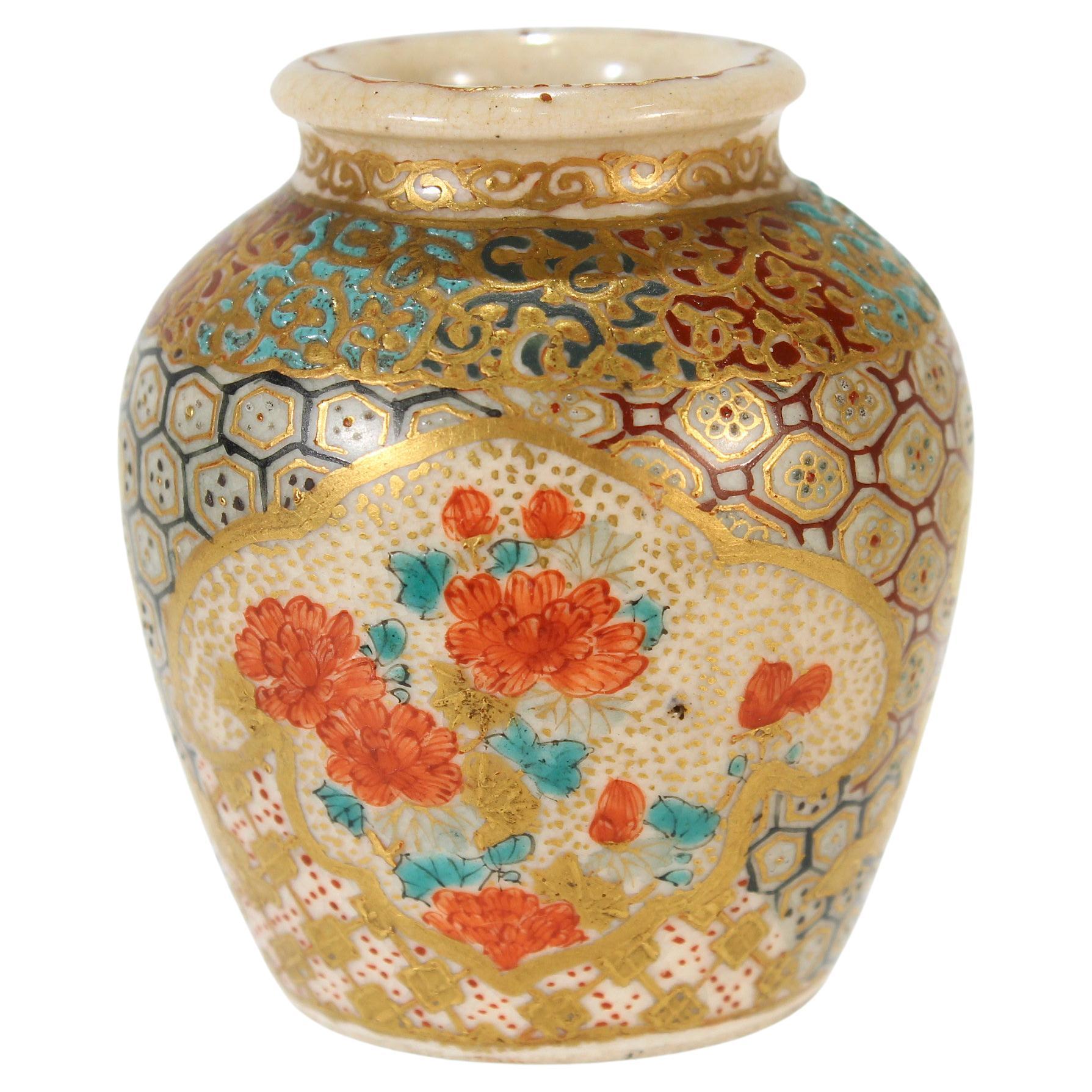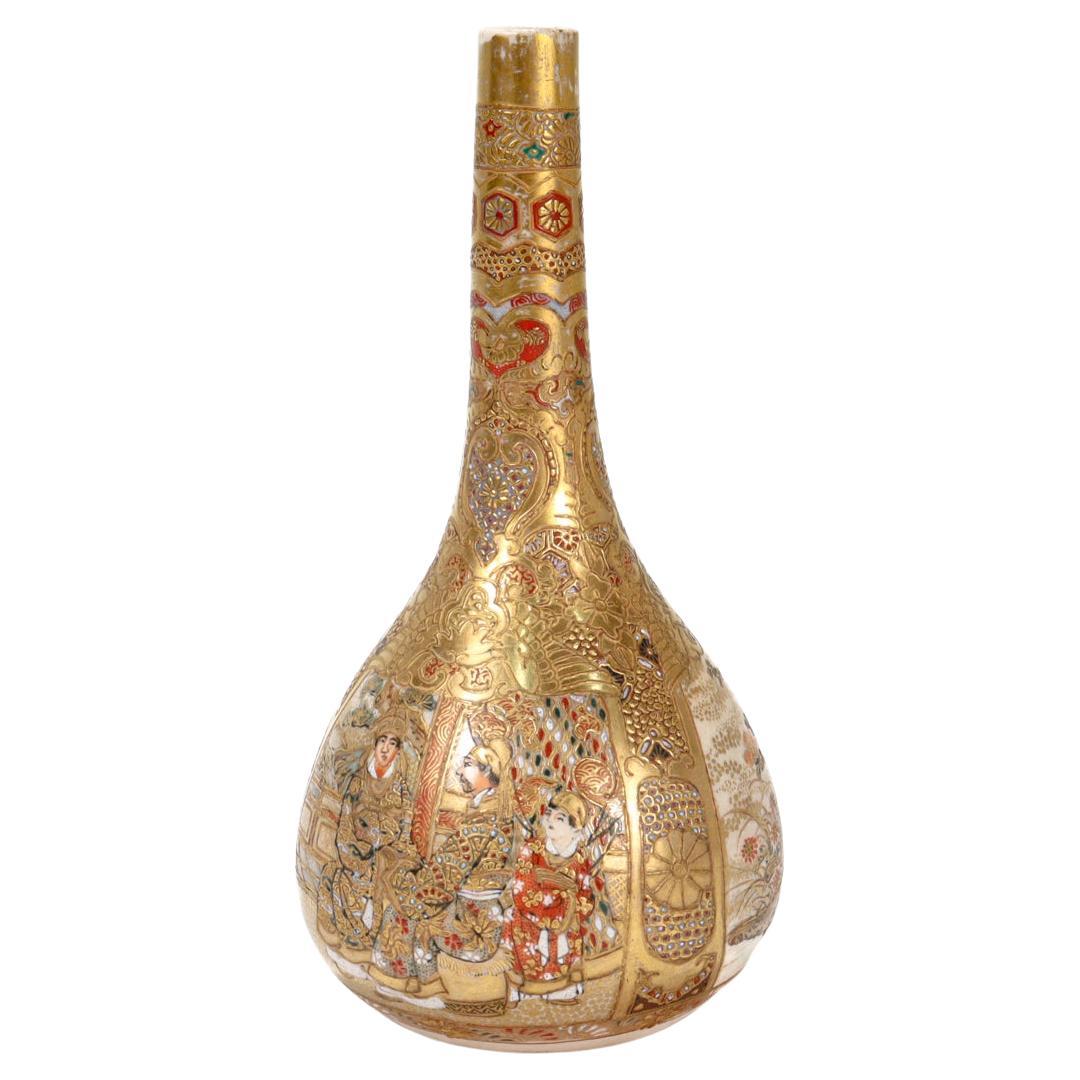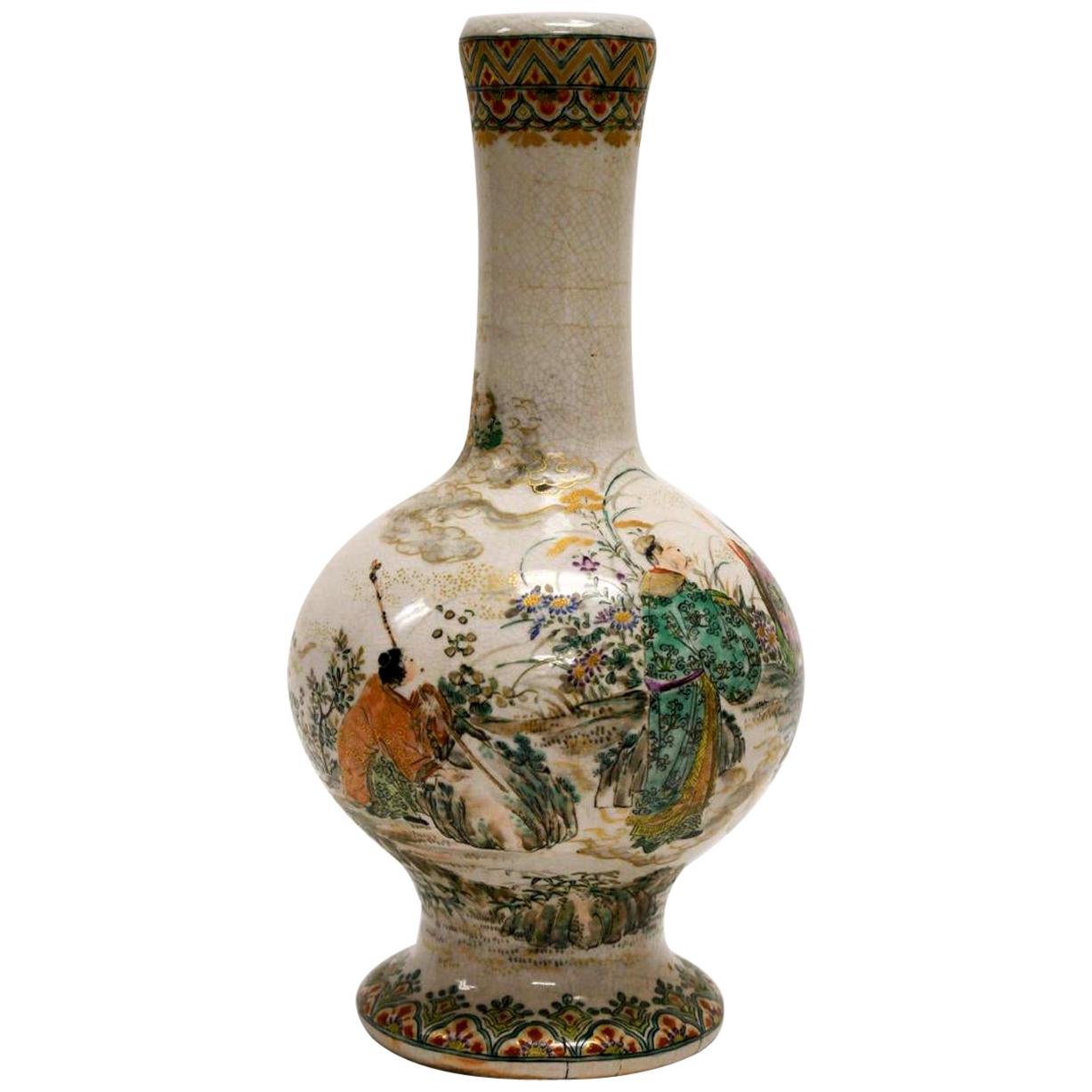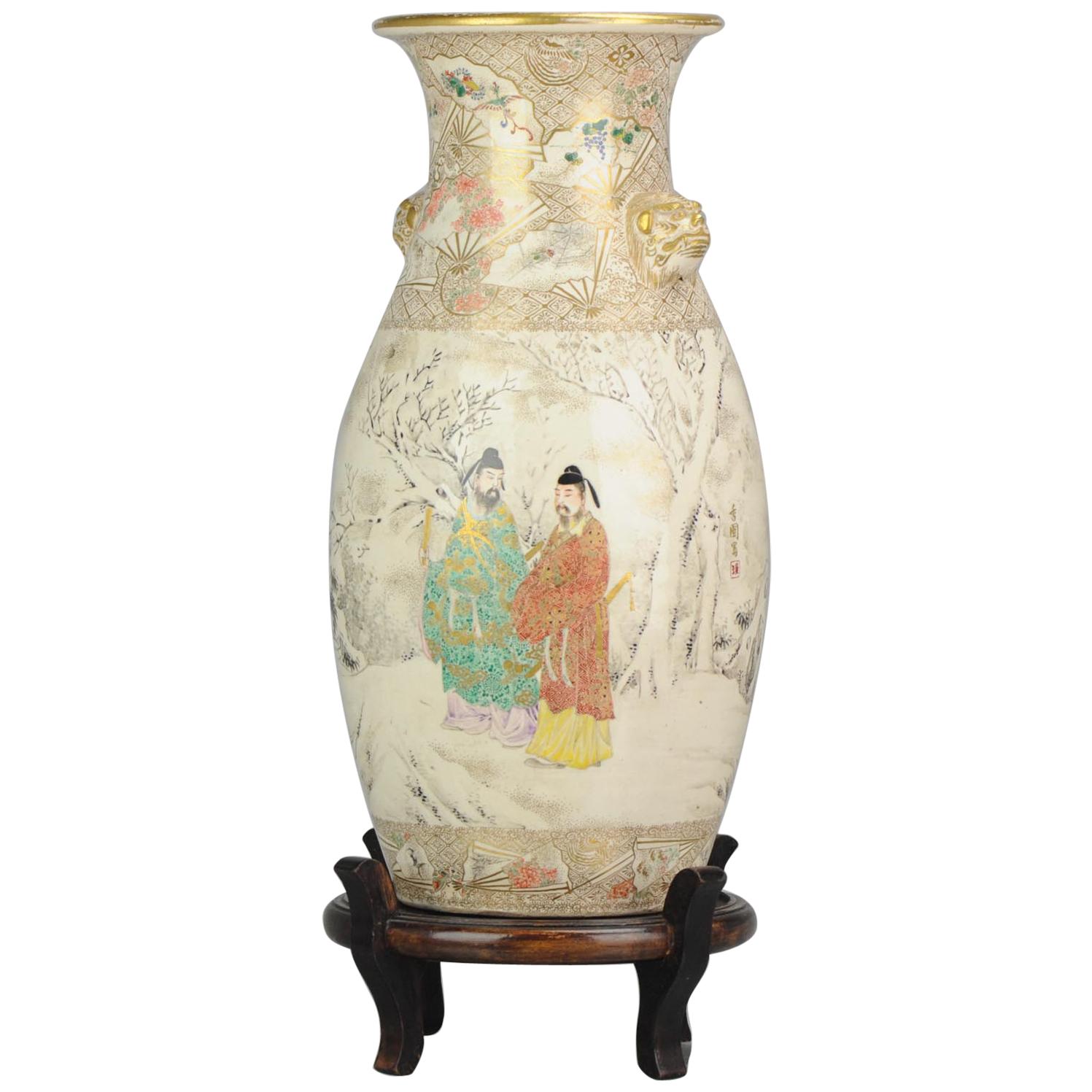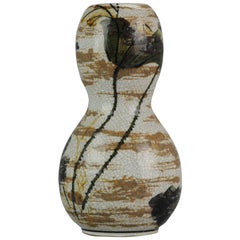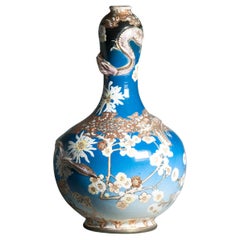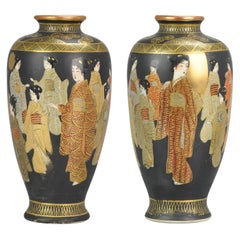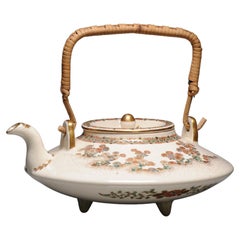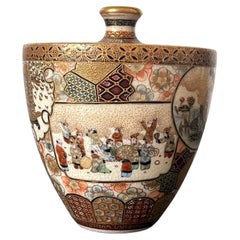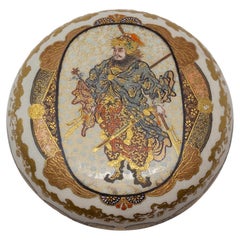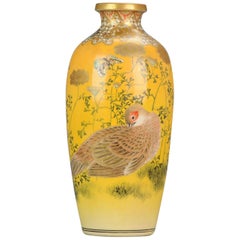
Antique Japanese Satsuma Taizan Yohei IX Vase Japanese Satsuma Ware
View Similar Items
Want more images or videos?
Request additional images or videos from the seller
1 of 20
Antique Japanese Satsuma Taizan Yohei IX Vase Japanese Satsuma Ware
$4,202.50List Price
About the Item
- Dimensions:Height: 9.45 in (24 cm)Diameter: 0.04 in (1 mm)
- Style:Meiji (Of the Period)
- Materials and Techniques:
- Place of Origin:
- Period:
- Date of Manufacture:19th Century
- Condition:Wear consistent with age and use.
- Seller Location:Amsterdam, NL
- Reference Number:Seller: 1330917030031stDibs: LU4863215454182
About the Seller
5.0
Platinum Seller
Premium sellers with a 4.7+ rating and 24-hour response times
Established in 2015
1stDibs seller since 2019
266 sales on 1stDibs
Typical response time: 3 hours
Authenticity Guarantee
In the unlikely event there’s an issue with an item’s authenticity, contact us within 1 year for a full refund. DetailsMoney-Back Guarantee
If your item is not as described, is damaged in transit, or does not arrive, contact us within 7 days for a full refund. Details24-Hour Cancellation
You have a 24-hour grace period in which to reconsider your purchase, with no questions asked.Vetted Professional Sellers
Our world-class sellers must adhere to strict standards for service and quality, maintaining the integrity of our listings.Price-Match Guarantee
If you find that a seller listed the same item for a lower price elsewhere, we’ll match it.Trusted Global Delivery
Our best-in-class carrier network provides specialized shipping options worldwide, including custom delivery.More From This Seller
View AllAntique 19/20C Japanese Satsuma Taizan Yohei Vase Japanese Satsuma Ware
Located in Amsterdam, Noord Holland
Fabulous Japanese vase by Taizan Yohei. Very nice quality for the domestic market
Marked base Taizan Yohei
Condition:
Perfect condition. Size: 185m...
Category
Antique 19th Century Japanese Meiji Ceramics
Materials
Earthenware
$1,146 Sale Price
20% Off
Huge 46CM Antique Taizan Yohei Style Meiji period Japanese Satsuma Vase
Located in Amsterdam, Noord Holland
Fabulous japanese earthenware Satsuma Vase of great shape and scene. Taizan Yohei style. Meiji Period
It was made into a lamp, there is a hole in the base, a cork in the neck and a b...
Category
Antique 19th Century Meiji Ceramics
Materials
Porcelain
Pair of Antique Japanese Satsuma Vase Japanese Satsuma Ware Lovely Ladies
Located in Amsterdam, Noord Holland
Fabulous Japanese vases with an all around scene of lovely ladies, 19th century.
Marked at base,
?? Yasui
Condition
Overall condition vase 1 perfect, just some minimal enamel...
Category
Antique 19th Century Japanese Meiji Ceramics
Materials
Earthenware
$1,623 Sale Price
20% Off
Antique ca 1900 Japanese Satsuma Taizan Teapot Richly Decorated Marked
Located in Amsterdam, Noord Holland
Japanese Satsuma vase, Meiji period
of ovoid form with slightly domed cover, decorated with monkeys in robes frolicking in a landscape beside a river.
Condition
Overall Conditio...
Category
Antique 19th Century Japanese Meiji Ceramics
Materials
Porcelain
$1,621 Sale Price
20% Off
19C Japanese Satsuma Vase Japanese Satsuma Winter Landscape Figures Marked
Located in Amsterdam, Noord Holland
Fabulous Japanese vase. The blue enamels are unusual and so nice.
Marked at the body;
The first two characters indicate a name: Xiang Feng (?) Followed by the character xie, mean...
Category
Antique 19th Century Japanese Meiji Ceramics
Materials
Porcelain
$2,387 Sale Price
20% Off
Antique 19th Century Japanese Satsuma High Quality Vase Satsuma Figural Scene
Located in Amsterdam, Noord Holland
Description:
Fabulous small Japanese. Absolute top quality decoration a pottery. Marked at the base.
Condition:
Overall condition 1 perfect, 1 with restoration to rim. Size: 90 ...
Category
20th Century Japanese Meiji Ceramics
Materials
Earthenware
$2,385 Sale Price / set
20% Off
You May Also Like
Fine Trumpet Satsuma Vase by Taizan Yohei
Located in Atlanta, GA
A tall ceramic satsuma ware vase in a rare slender trumpet form with very fine surface decoration by Japanese potter Taizan Yohei IX (1864-1922). The vase was dated to late Meiji period circa 1890-1900s.
The main motif and the focal point of the vase is the continuous panel that circumvents the entire mid-body, apparently a rendition of the Boy's Festival, known as "Tango no Sekku" in Japanese. The traditional festival is celebrated on May 5th of each year. Originated in Nara Period...
Category
Antique 1880s Japanese Meiji Ceramics
Materials
Ceramic
Fine and Rare Miniature Satsuma Vase by Taizan Yohei
Located in Atlanta, GA
A very fine miniature ceramic vase in satsuma ware by Taizan Yohei IX (1864-1922) circa 1880-1890s of late Meiji period. The vase with a broad flat should...
Category
Antique 1880s Japanese Japonisme Ceramics
Materials
Ceramic
Japanese Meiji Period (1868-1912) Satsuma Kogo Incense Box by Taizan Yohei
By Taizan Yohei IX
Located in Newark, England
DEPICTING BISHAMON ONE OF THE SEVEN LUCKY GODS
From our Japanese Satsuma collection, we are delighted to offer this Japanese Satsuma Kogo by Taizan. The Satsuma Kogo of petit circul...
Category
Antique Early 1900s Japanese Meiji Ceramics
Materials
Ceramic, Earthenware, Pottery
Japanese Meiji Period (1868-1912) Satsuma Earthenware Vase Taizan for Hattori
Located in Newark, England
Meiji Period (1868-1912)
From our Japanese collection, we are delighted to offer Japanese Meiji Period Satsuma Vases. The Satsuma Vase of hexagonal form with a slight waisted neck and tight rounded rim is extensively decorated with multiple figures to two large scenes. The first scene features a beach with waves to the background and a plethora of figures including multiple geisha holding traditional Japanese wagasa’s. The second scene follows on from the first with a large building in the foreground holding figures on a large platform under a pagoda roof with a pagoda building in the background and further figures in the foreground. The scenes are framed by a full detailed border with gilt shapes, flowers amongst pink shaded backgrounds and butterflies around the neck. The Satsuma Vase is unusually signed Fine Art, Satsuma Ware, Dai Nippon (Great Japan), Hattori Made, Gosuido Works, Taizan Painted. 美術, サツマヤキ(薩摩焼), 大日本, 服部造, 五スイ堂工, 對山画 and dates to the Meiji Period (1868-1912) and the turn of the 20th century circa 1905.
Satsuma ware is a type of earthenware pottery originating from the Satsuma province in Southern Kyushu, Japan’s third largest island.
Wagasa are traditional Japanese umbrellas made of washi paper attached to a bamboo frame and treated to ensure it is waterproof.
Meiji Period was an era of Japanese history that spanned from 1868 to 1912. It was the first half of the Empire of Japan, when the Japanese people began to build a paradigm of a modern, industrialised nation state and emergent great power, influenced by Western countries and aesthetics. As a result of radically different ideas, the changes to Japan were profound and it affected the social structure, politics, economy, military, and foreign relations across the board. The period corresponded to the reign of Emperor Meiji and was preceded by the Keio era and was succeeded by the Taisho era.
Cultural Art during the Meiji Period was of particular interest to the government and they overhauled the art export market which in turn promoted Japanese arts via various world’s fairs, beginning in Vienna at the world fair in 1873. The government heavily funded the fairs and took an active role organising how Japan’s culture was presented to the world including creating a semi-public company named Kiritsu Kosho Kaisha (First Industrial Manufacturing Company). The Kiritsu Kosho Kaisha was used to promote and commercialise exports of Japanese art and established the Hakurankai Jimukyoku (Exhibition Bureau) to maintain quality standards. For the 1876 Centennial International Exhibition in Philadelphia, the Japanese government created a Centennial Office and sent a special envoy to secure space for the 30,000 items that would be displayed. The Imperial Household also took an active interest in arts and crafts, commissioning works by select artists to be given as gifts for foreign dignitaries further emphasising the high quality and importance of Japanese art. Just before the end of the 19th century in 1890, the Teishitsu Gigeiin (Artist to the Imperial Household) system was created to recognise distinguished artists. These artists were selected for their exceptionally high quality wares and talent in their own industry. Over a period of 54 years Seventy artists were appointed, amongst these were ceramicist Makuzu Kozan and cloisonné enamel artist...
Category
Antique Early 1900s Japanese Meiji Ceramics
Materials
Earthenware, Pottery
Antique Japanese Satsuma Miniature Cabinet Vase
By Master Ryozan
Located in Philadelphia, PA
A fine diminutive, antique Japanese Satsuma pottery cabinet vase.
Decorated throughout with gilding and raised enamel.
There are...
Category
20th Century Japanese Meiji Vases
Materials
Ceramic
Antique Japanese Satsuma Pottery Bud Vase
By Makuzu Kozan
Located in Philadelphia, PA
A fine antique Japanese Satsuma pottery vase.
In the form of a bud vase with a round base and narrow, tapered neck.
Decorated throug...
Category
Early 20th Century Japanese Meiji Ceramics
Materials
Pottery
Recently Viewed
View AllMore Ways To Browse
Taizan Yohei
Qing Dynasty Porcelain
Japanese Arita Porcelains
Chinese Art Pottery
Japanese 17th
Chinese Famille Rose
Asian Ceramic Vases
Japanese Blue And White Porcelain
Chinese Famille Rose Porcelain
Gold Imari
18th Century Japanese Art
Antique Ming Dynasty
Chrysanthemums In Art
17th Century Chinese Porcelain
Asian Vase Pair
Blue And White Chinese Export Porcelain
Japanese Gold Imari
Antique Famille Rose Porcelain

